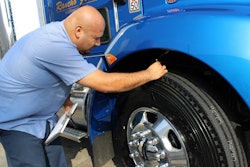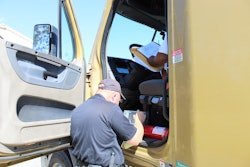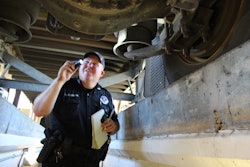
This article was updated April 26, 2021.
While keeping the lights on seems like a fairly easy thing to do, lighting violations (inoperable lamps) were the top vehicle violation and were found in 12% of all commercial vehicles inspected in 2020, according to the Federal Motor Carrier Safety Administration.
Light problems are arguably some of the easiest to spot during a pre-trip inspection and conversely will also be some of the easiest violations for inspectors to spot during the upcoming Roadcheck blitz May 4-6 . The 2021 vehicle inspection blitz, kicking off in a week, will focus on the top truck and driver violations last year: lighting and hours of service compliance.
Unfortunately, fixing outages on the road may entail a lot more than simply replacing a broken bulb.
“In this era of LED lighting, lamp failure may suggest broader systemic issues,” said Optronics Director of Engineering Kyle O’Dell. “A lamp that appears to simply be burned out turns out to be caused by corrosion in that lamp’s branch of the electrical system. This means moisture is loose in the entire system – and a bigger problem.”
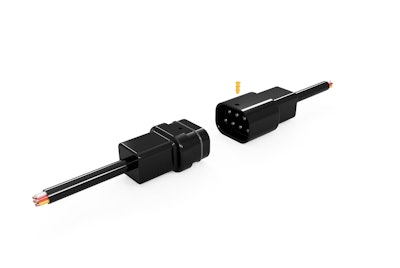 Optronics’ newly re-patented USA-PLUS Modular Connection System has a unique O-ring-style seal and secondary lock pin design to protect against moisture and dust.
Optronics’ newly re-patented USA-PLUS Modular Connection System has a unique O-ring-style seal and secondary lock pin design to protect against moisture and dust.During inspections, O’Dell recommended drivers and techs diagnose light failures by first checking for disconnected, broken and cracked lamps. If connections and lamps are fine, then move on to wire harness segments and connectors closest to the malfunctioning light.
Though it may seem like a quick way to diagnose light failure, stay away from wire probes.
“The use of wire probes or picks to check voltage or continuity should be immediately discontinued, as this practice immediately compromises a harness system,” said Andrew Liuzzo, marketing specialist at Truck-Lite. “Puncturing wire allows for moisture to wick throughout a vehicle’s electrical system, corroding it from the inside out. Using a multimeter to troubleshoot a wiring harness system is the safest way to ensure the longevity of a harness system without damaging connectors, wires and seals.”
The greatest threat to lighting and electrical systems is corrosion, Liuzzo said, so be sure to check for it regularly. The slightest pin hole in wire insulation can pave the way for moisture which can lead to devastating corrosion, light failure and a violation.
“Using sealed connectors, proper procedures for field repair and the use of dielectric grease or spray are some of the best ways to avoid wiring issues, which often lead to lighting-related violations,” Liuzzo advised. “The longer you can maintain the integrity of a vehicle’s wiring harness, the better your lighting system will perform.”
To help keep the lights on, O’Dell recommends following these five steps: (1) start corrosion prevention on the day you take possession of the vehicle; (2) train drivers to perform a proper pre-trip inspections (make them a part of the maintenance protocol); (3) train everyone on the team on how to spot corrosion and where to look for it; (4) stick to a regimented planned maintenance (PM) schedule; (5) and replace incandescent laps with more robust LED lamps.
Brighter and longer-lasting, LED lights are commonly found on new tractors but that’s not always the case with older trucks and trailers.
“The OEM trend toward LED lighting is also driving the replacement market, though the aftermarket is hindered by the fact that many vehicles originally equipped with incandescent lamps are still in service today, and some people don’t realize that replacement LED lamps are generally as easy as plug and play,” said Marcus Hester, Optronic’s vice president of sales and marketing.
The ONE Series LED stop, tail, turn lamp from Optronics was the first low-cost, single-diode replacement for incandescent lamps.
“That’s 100,000 service hours compared to just 2,500 for incandescents, and 50,000 for most LED lamps, and the ONE Series LED lamp is only half the price of a traditional LED lamp,” Hester said.
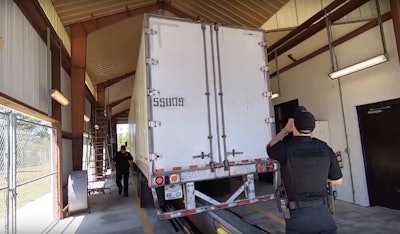 The marker lights above the rear doors on this truck were out. Don’t be this guy.
The marker lights above the rear doors on this truck were out. Don’t be this guy.Though some fleets may hold back from switching to LEDs because of labor time and cost, they can actually improve a fleet’s bottom line in the long run.
“Converting to an LED lighting system is perhaps the most surefire way to avoid CVSA violations,” Liuzzo said. “LED lighting has an exponentially longer lifespan than incandescent systems and uses a fraction of the current draw, so it is far less likely to fail or otherwise compromise a vehicle’s electrical system.”
As fleets transition to warmer temperatures, it’s especially important to more closely check a truck’s electrical system, which includes ensuring that modular connectors are filled with an adequate amount of dielectric grease.
“Many fleet maintenance professionals think of corrosion as a more winter-related issue,” O’Dell said. “However, though brutal cold-weather conditions and chemicals in Northern regions may help to compromise an electrical system, warmer, wetter weather actually amplifies the spread of corrosion. Every 50-degree Fahrenheit rise in temperature doubles the rate of corrosive activity.”
International Roadcheck is the largest targeted commercial motor vehicle program in the world, with more than 1.4 million roadside inspections conducted over the event's 33 year history. On average, nearly 15 trucks or buses are inspected every minute of the 72-hour period.
Tips from Optronics to keep the lights on
• Each area should be visually inspected for the telltale signs of corrosion, including cracks, wear areas and punctures.
• Any wires that make contact with metal surface should be carefully inspected.
• Abnormalities in cables and wiring insulation, such as cracks, oil residue and signs of corrosion activity, such as green residue, should be assessed.
• Pay special attention to cables and wiring that have been sharply bent during installation.
• Connectors in places above or behind tires (particularly with modular systems) may require supplemental protection like plastic looms, moldings or tubing.
• Using secondary and tertiary levels of protection will reduce the opportunity for high-pressure moisture to enter the system. These protections can also reduce the potential of damage from rocks, road debris and ice accumulation in winter.
• Corrosion detected anywhere can suggest a system-wide contamination in process.
Free training from Truck-Lite
• Truck-Lite Training Institute (TTI) is a free series of online courses that can be taken at a technician’s pace. The Master Lighting & Harness Technician training is a comprised of six modules that cover topics ranging from lighting evolution to harness and lighting best practices. TTI also includes Fundamentals of Multimeter Training and free downloadable harness and lighting user’s guides. Technicians are invited to sign up.





